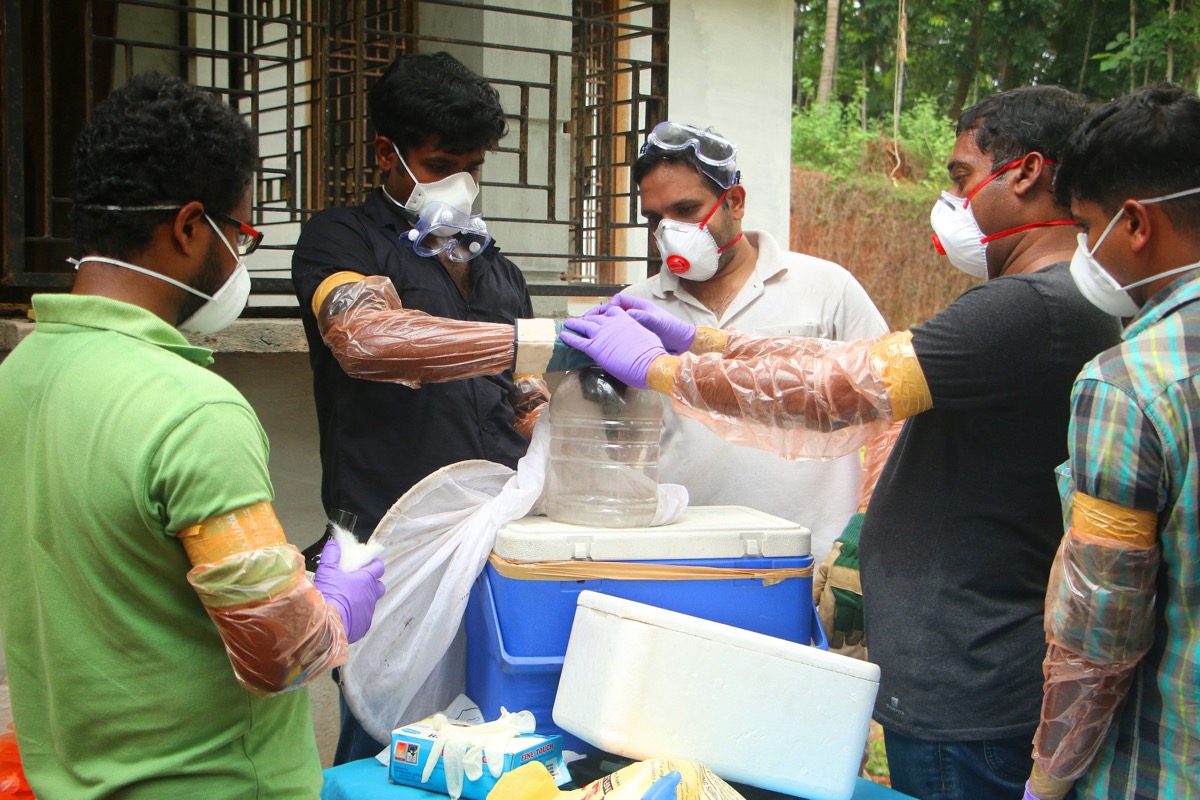Where Did the Deadly Nipah Virus Come From — And What Other Outbreaks Should We Expect?

News of virus outbreaks often seems to come out of nowhere: One day, no one's heard of a virus, and the next, it's dominating headlines — like the Nipah virus outbreak in India. Or, you may have thought that a virus disappeared, only for it to re-emerge — like Ebola.
But viruses don't just pop up out of nowhere. They're in us, on us, all around us — quietly, and sometimes noisily (cough cough, the flu), existing.
In fact, "we really only know the tip of the iceberg of the viruses that exist in nature," said Dr. Amesh Adalja, an infectious-disease physician and a senior scholar at the Johns Hopkins Center for Health Security. Take, for example, a classic visit to the doctor's office for an upper respiratory infection, Adalja said: The doctor will most likely tell you it's a viral infection but won't know which virus it is, because diagnostic tools haven't yet gotten us there. [27 Devastating Infectious Diseases]
"The vast, vast majority of viruses are probably harmless to humans — it's only a small proportion that have the ability to infect us and an even smaller proportion that can cause disease," Adalja told Live Science. But those few harmful ones can cause a ripple effect in our increasingly globalized world. (Even back in 1918, when the world wasn't nearly as connected, the Spanish flu wiped out an estimated 20 million to 50 million people.)
The two viruses that are currently grabbing headlines — Nipah and Ebola — are "zoonotic" viruses, which means they typically exist in animals but sometimes can be transmitted to humans. "That initial transmission, from animal to human, is an accident — it's not what the virus wants to do," said Dr. William Schaffner, an infectious-disease specialist at Vanderbilt University.
However, these large outbreaks are the exceptions. Usually, the virus hits a "dead end" in that one human host, Adalja said. "Oftentimes viruses are tied pretty tightly to host species," he added. "Those genetic characteristics that allow them to flourish in one species may not be the same in another, so that becomes a big barrier for a virus to surpass."
But, of course, from time to time, you get the hardy ones; in both the Nipah and Ebola outbreaks, the viruses showed they can jump between humans.
Get the world’s most fascinating discoveries delivered straight to your inbox.
"There's a very, very, very select few [viruses] that can actually sustain transmission between humans, and that's where a lot of the danger lies," Adalja said.
If the viruses become capable of hurling themselves from human to human, they begin to jump countries, hitching free rides across an ever-globalized world. Then, it becomes a pandemic.
Where are viruses when they're not causing outbreaks?
Viruses aren't quietly lurking for decades or centuries, waiting for the right moment to infect a host, because without a host, a virus can't survive. Viruses can be in one of two places: inside hosts (though not necessarily causing symptoms), or in a short transition between hosts (like a flu virus particle left behind on a doorknob). "They're not just laying there on the ground like four-leaf clovers," Adalja said. In fact, out in the environment, ultraviolet light, humidity or other environmental conditions would degrade them, he said.
And new viruses can be created. Because viruses have genetic material and selection pressures on them, they can evolve over time, Adalja said. Thus, new viruses may continuously take the stage. This not only makes predicting outbreaks difficult but stifles human efforts to develop vaccines. [10 Deadly Diseases That Hopped Across Species]
"Every time we get a little change [in a virus], we get a new outbreak," Schaffner told Live Science. Because the flu virus continuously evolves, for example, the vaccines for it are never 100 percent effective. This is one of the challenges in creating an HIV vaccine as well, he added.
Other viruses, such as measles and smallpox, remain pretty much the same for centuries, even millenia, Schaffner said. The latter is a vaccine success story: Following global vaccination efforts, smallpox has been completely eradicated from the world, save for a couple of vials in locked-away freezers in Russia and the United States, he said.
Outbreaks spread, outbreaks contained
Despite the recent outbreak, the Nipah virus still has very limited ability to spread between humans, Adalja said. In fact, he thinks experts will be able to contain the current outbreak to Kerala, India. But it's important to track the Nipah virus and make sure it's not acquiring the ability to jump more easily between humans over time, he added.
Meanwhile, researchers are working to develop a Nipah vaccine. Because bats, a favorite host of the Nipah virus, are common around the world, Adalja expects to see more unrelated Nipah outbreaks pop up in other places in the future. (Contact with bats is the source of most Nipah outbreaks. Some previous outbreaks have been linked to people drinking raw date palm sap contaminated by bats, and the animals can also transmit the virus to pigs, which, in turn, can infect humans).
As for the current Ebola outbreak, pharmaceutical company Merck has been distributing experimental vaccines to thousands of people in an effort to contain it.
These viral outbreaks will occur, and then they'll be contained. Then, other outbreaks will occur, which will again be contained. It's just hard to predict when and where these viruses will flare up, Schaffner said. "That's why we have to have a surveillance system that's out there constantly monitoring what's going on," he said.
Improved technology certainly has benefits: Today, there are much more "sophisticated diagnostic capacities, [so] we're able to define these events much more quickly and much more precisely than we were able to 20 years ago," Schaffner said.
But better technology brings challenges as well: A more globalized world makes it easier for viruses to spread widely."Today, anyone can get on a plane anywhere in the world and be around the world in 24 hours," Schaffner said. "The world is smaller than ever — it's easier now than it was 50 years ago to introduce one of these viruses into the United States."
Editor's note: This article was updated to include more information about the source of the Nipah virus.
Originally published on Live Science.

Yasemin is a staff writer at Live Science, covering health, neuroscience and biology. Her work has appeared in Scientific American, Science and the San Jose Mercury News. She has a bachelor's degree in biomedical engineering from the University of Connecticut and a graduate certificate in science communication from the University of California, Santa Cruz.


